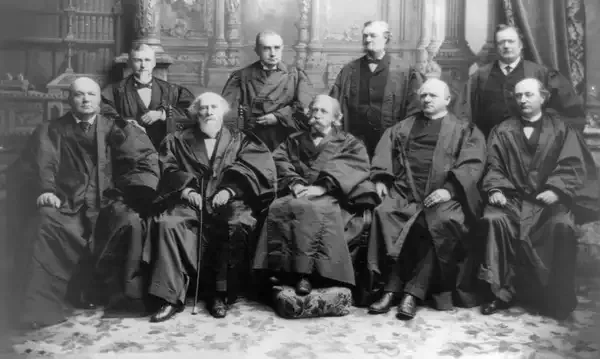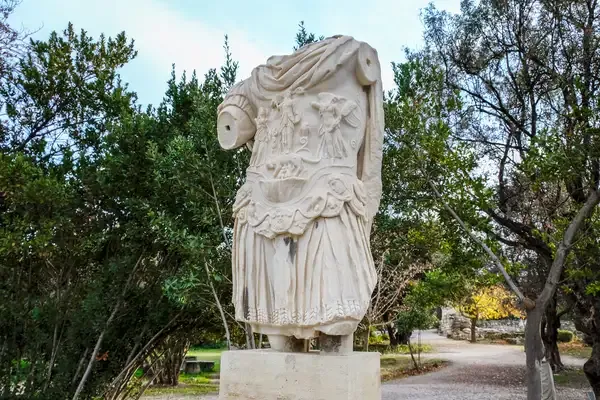Why Are There Nine Justices on the U.S. Supreme Court?
The U.S. Supreme Court has nine justices due to historical precedent and practical considerations. Initially, the number was set to match the number of federal judicial circuits, which expanded over time. Congress has the authority to change the number, but it has remained unchanged since 1869. A nine-member court helps ensure a diverse range of opinions, balances workloads, and reduces the likelihood of tie votes, which is crucial for maintaining consistency and stability in legal decisions.

The composition of the U.S. Supreme Court has been a topic of discussion and debate since the founding of the United States. Today, the Supreme Court consists of ''nine justices'', a number that has remained unchanged since 1869. Understanding why there are nine justices involves a blend of historical context, constitutional provisions, and the practicalities of judicial function.
Historical Context
Initially, the Supreme Court was established with six justices in 1789. This number fluctuated over the years, increasing to ten in 1863. However, after the Civil War, Congress decided to set the number of justices back to nine in 1869. This decision was influenced by various factors, including political dynamics and the need for a balance of power among the branches of government.
The Role of the Justices
The ''nine justices'' of the Supreme Court are tasked with interpreting the Constitution and federal law. Their decisions can have far-reaching implications for American society, influencing areas like civil rights, healthcare, and the balance of power between state and federal authority. Having nine justices allows for a diverse range of opinions and interpretations, which can lead to more nuanced legal outcomes.
Constitutional Provisions
The U.S. Constitution does not specify the number of justices on the Supreme Court. Instead, it grants Congress the authority to determine the Court's size. This flexibility has allowed the number of justices to change over time, reflecting the evolving needs and political landscapes of the nation. The current number of nine justices was solidified by the Judiciary Act of 1869, which was motivated by the desire to maintain stability and continuity in the judicial system.
Advantages of Having Nine Justices
There are several advantages to having nine justices on the Supreme Court:
- Diverse Perspectives: With nine justices, the Court can benefit from a wider range of legal philosophies and life experiences, which can lead to more balanced and informed decisions.
- Reduced Risk of Tie Votes: An odd number of justices minimizes the likelihood of tie votes, which can occur if the Court has an even number of members. Tie votes effectively leave lower court decisions intact, which may not always be desirable.
- Stability: The number nine has become a tradition, providing a sense of stability within the judicial system. Changing this number could lead to uncertainty and potential political manipulation.
Implications of Changes to the Number of Justices
While the Constitution allows for changes to the number of justices, any attempt to alter this number can have significant implications. For instance, proposals to increase the number of justices, often referred to as "court-packing," can lead to accusations of politicizing the judiciary. This can undermine public trust in the Supreme Court as an impartial arbiter of justice.
Moreover, altering the composition of the Court could set a precedent that future administrations might exploit for political gain. This potential for manipulation raises questions about the independence of the judiciary and the fundamental principle of separation of powers.
Current Composition and Its Impact
The current composition of the Supreme Court includes justices appointed by both Democratic and Republican presidents, which reflects a balance of ideological perspectives. This diversity is crucial for ensuring that the Court considers a wide range of viewpoints in its rulings. The justices' individual philosophies can significantly influence landmark decisions, making their collective perspectives essential for the functioning of democracy.
In recent years, the Supreme Court has tackled high-profile cases involving issues such as abortion rights, healthcare, and voting rights, demonstrating the profound impact that the ''nine justices'' have on American life. The decisions rendered by the Court can shape public policy and social norms, highlighting the importance of maintaining a balanced and fair judicial system.
Conclusion
In summary, the number of justices on the U.S. Supreme Court has historical roots and practical implications that contribute to the effective functioning of the judiciary. The decision to maintain nine justices has allowed for diverse perspectives, reduced the risk of tie votes, and provided stability to the judicial system. While the Constitution permits changes to the size of the Court, any such alterations should be approached with caution to preserve the integrity and independence of the judiciary. Understanding the significance of the ''nine justices'' is essential for appreciating the role of the Supreme Court in American democracy.
| Year | Number of Justices |
|---|---|
| 1789 | 6 |
| 1807 | 7 |
| 1837 | 9 |
| 1863 | 10 |
| 1869 | 9 |
Understanding the history and implications of having nine justices is crucial for anyone interested in the workings of the U.S. Supreme Court and the impact it has on the law and society. This knowledge not only enriches the public discourse but also underscores the importance of maintaining a judiciary that is independent, fair, and representative of the diverse views within the nation.












